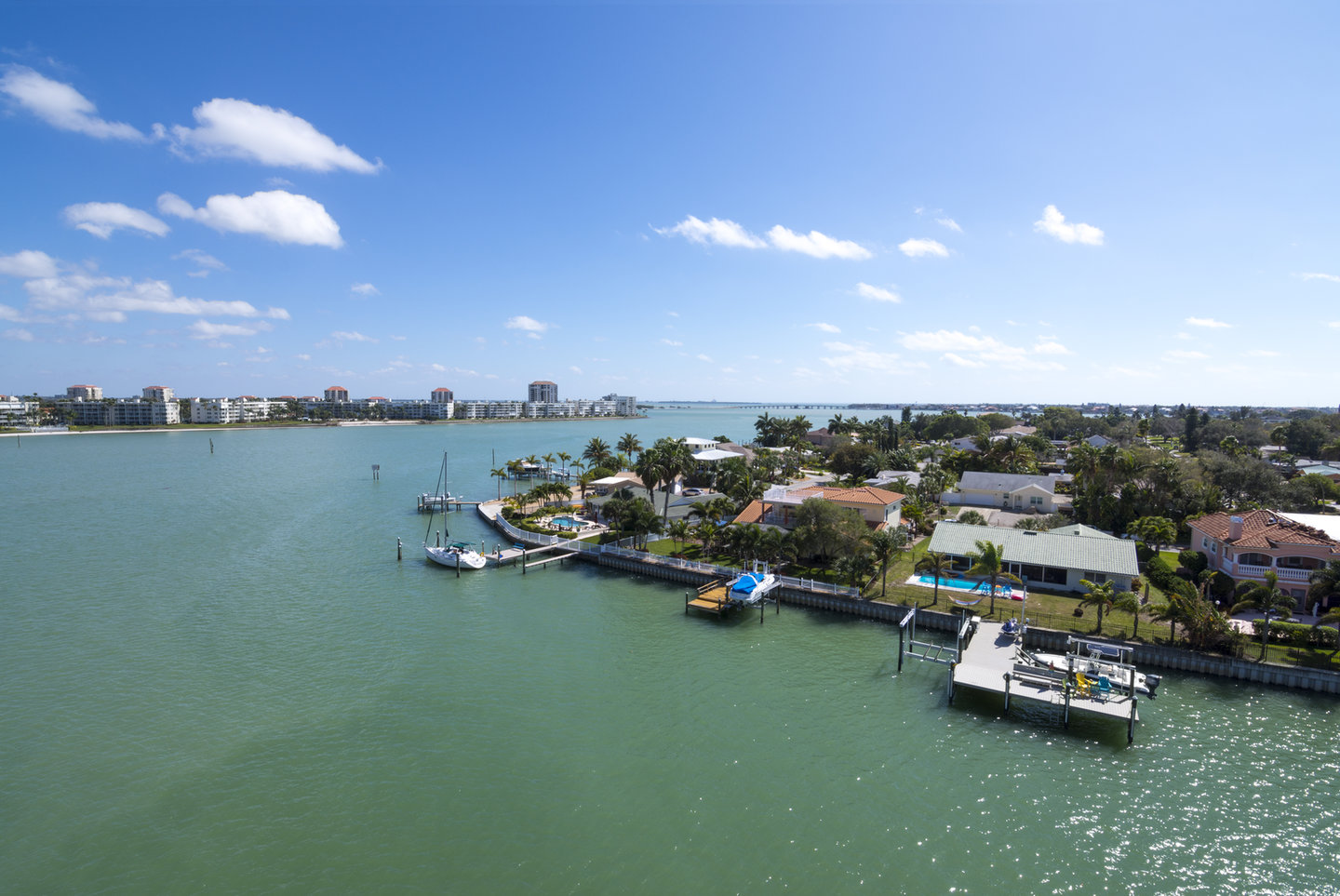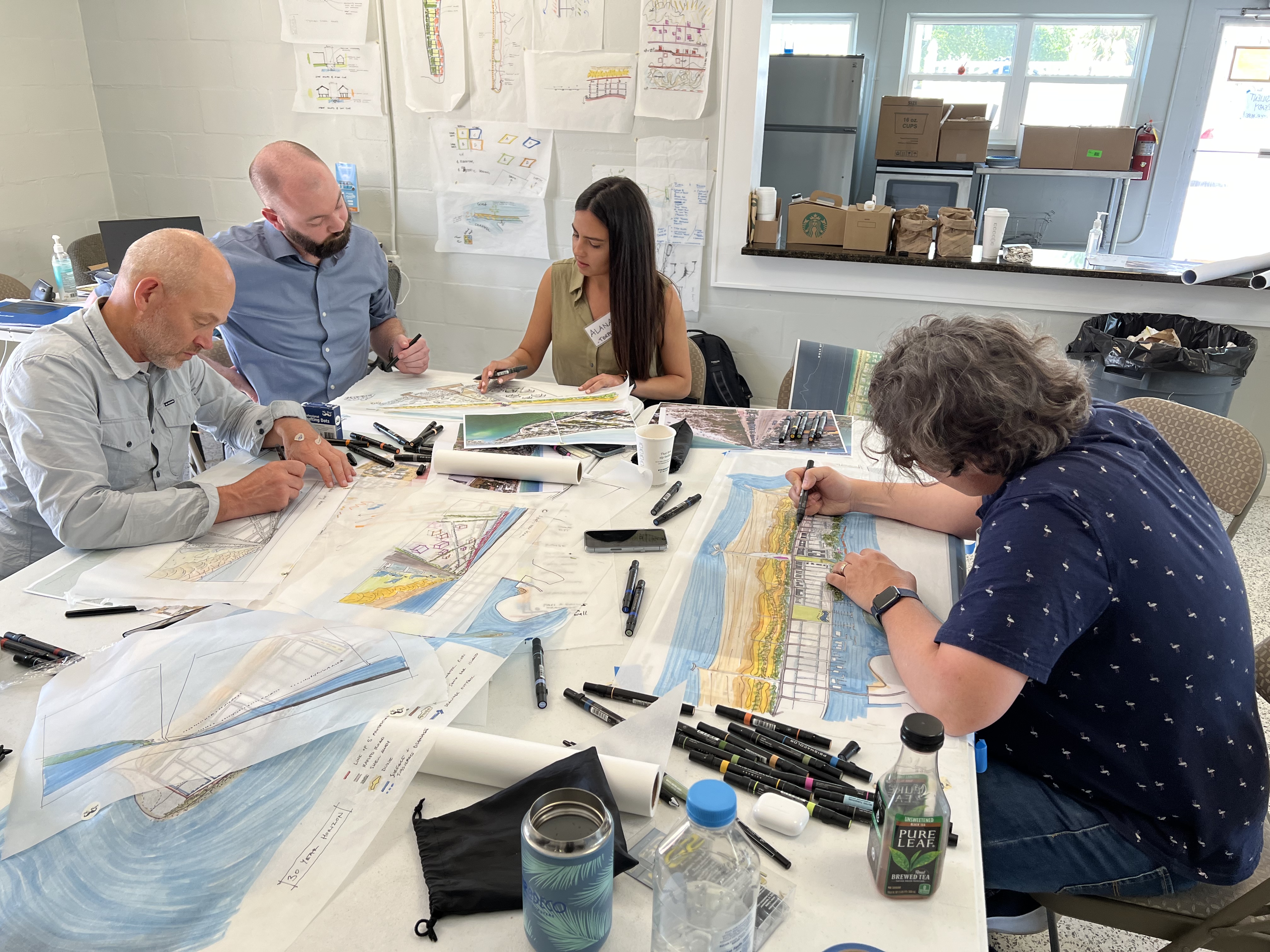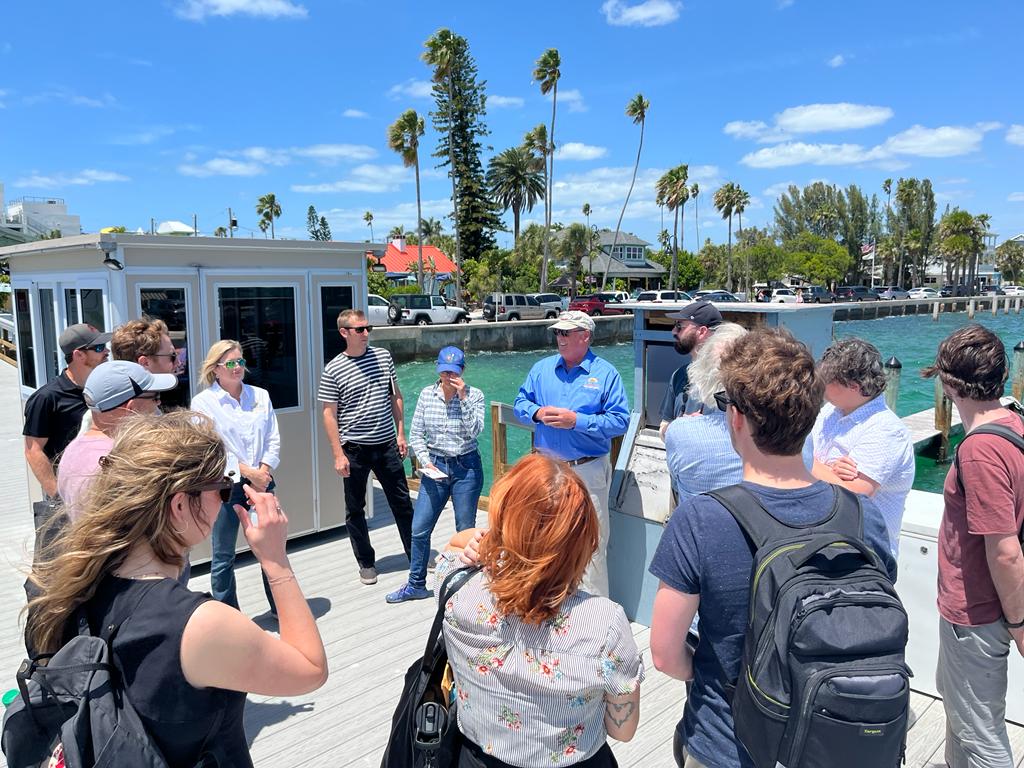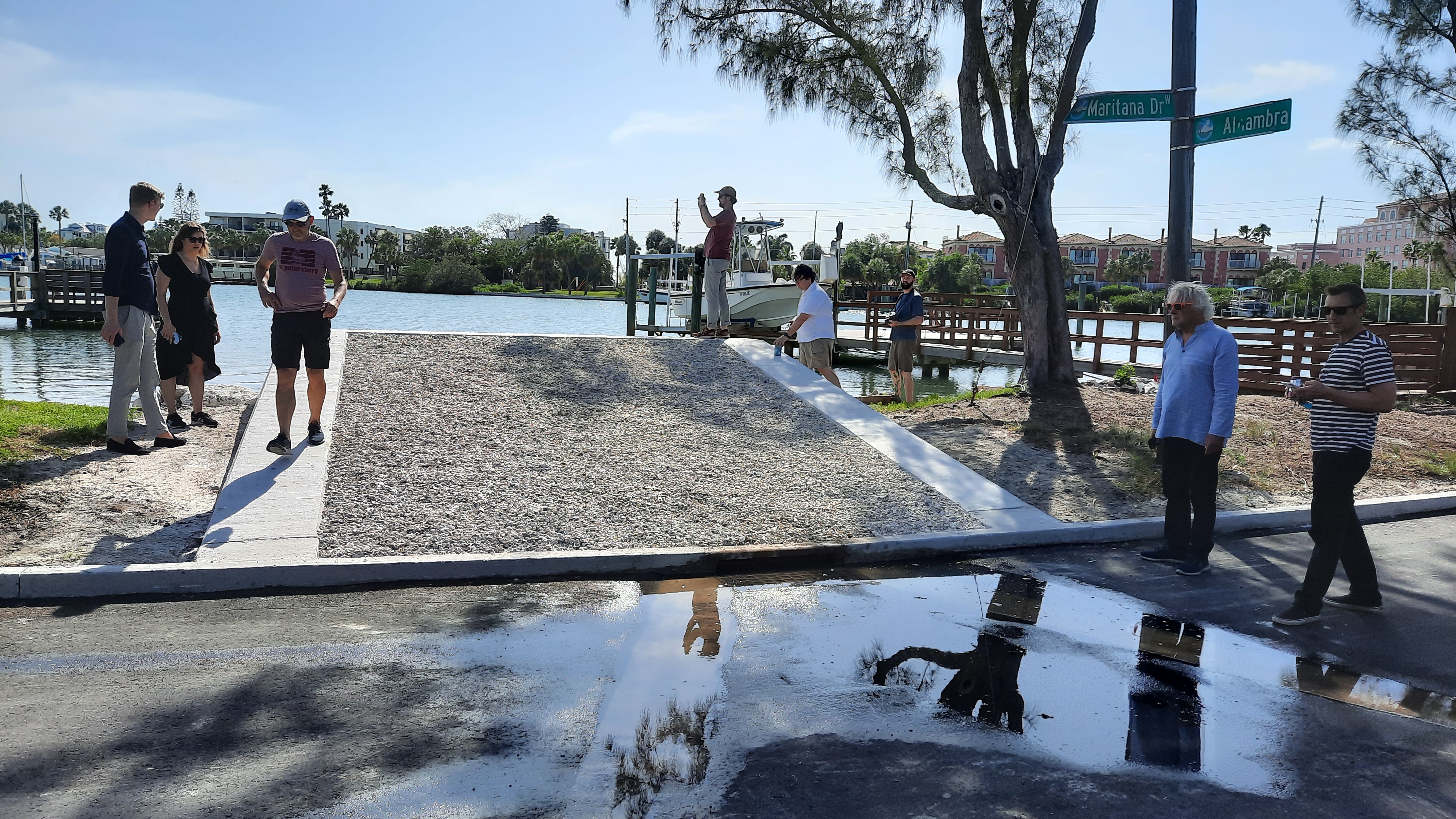Tampa Bay, Florida
Climate-resilient alternatives for Tampa Bay, Florida
Coastal communities across Florida’s Tampa Bay, like other delta regions, are facing increasing risk as a result of sea level rise. Weather events where high tides and heavy precipitation coincide, known as compound flooding, also pose a complex problem for which there is no easy solution. Urban communities find themselves surrounded by water. The latest IPCC forecasts on accelerated sea level rise indicate an even greater urgency to act quickly.
The Resilient Ready Tampa Bay project was created to enhance the capacity of Tampa Bay communities to assess, plan for, and adapt to flood impacts through the expanded use of multi-functional green infrastructure systems and resilient site design and construction practices.
An example of one such vulnerable coastal community, and one of the Resilient Ready focus areas, is the Pass-A-Grille barrier island. Located south-west of St. Petersburg FL, this barrier island is narrow; it contains only a single line block development. The western side facing the Gulf of Mexico has dunes, whereas the eastern edge is protected by a small seawall. The island’s geology consists of very permeable, coarse sand deposits with a depth of 50 meters on top of a rock formation. In its current state, Pass-A-Grille already suffers from so-called sunny day flooding. Regular high tides cause groundwater to come up through the drainage system, slightly inundating the streets. King tide events will overtop the seawall, even without a storm surge.
Plans to protect the community consist of raising the seawall to the 5 ft. +NAVD88 standard, and installing pumps to discharge rainfall runoff. But this is only a short-term solution. Sea level rise is expected to catch up soon and as groundwater levels will rise proportionally with the sea level, the lowest parts of the island are expected to be permanently inundated by the end of the century. This process cannot be halted due to the deep, permeable sand layer.
Perhaps an even more urgent problem are water quality issues. Manatees and other wildlife suffer heavily from nutrient pollution in the Tampa Bay area and the Gulf of Mexico. Urban runoff polluted by fertilizers and organic matter such as grass cuttings further exacerbates this problem.

Tampa Bay Florida during high tide
Resilient Ready Tampa Bay project
Resilient Ready Tampa Bay is an effort to better position local governments in Tampa Bay to apply for State and Federal grants. Tampa Bay Regional Planning Council co-project manager, Sarah Vitale, states that "this project was designed to increase the capacity of local leaders to become more `resilient-ready` when faced with our region's current and future compound flooding challenges."
Resilient Ready walks participants through a collaborative, charette-style design process that facilitates the co-development of flood mitigation concepts and establishes a clearer understanding of cost-benefits; resources which are replicable and provide case examples for other communities throughout the Tampa Bay area. The project will conclude with a showcase Symposium, creating a setting for regional dialogue and resource sharing.
Flooding challenges
In April 2022, the Tampa Bay Regional Planning Council and New Orleans-based architecture and environments firm Waggonner & Ball hosted a set of design charettes on multifaceted flooding challenges, including adaptation to sea level rise (SLR) in the Tampa Bay region. The Resilient Ready Tampa Bay project, commissioned by the Tampa Bay Regional Planning Council with funding provided by the State of Florida’s Department of Environmental Management, brought together a range of local and international experts on urban climate adaptation to work on three project areas across Tampa Bay. Deltares’ contribution was financed by the Netherlands Consulate General in Miami.

Pass-a-Grille in Florida






